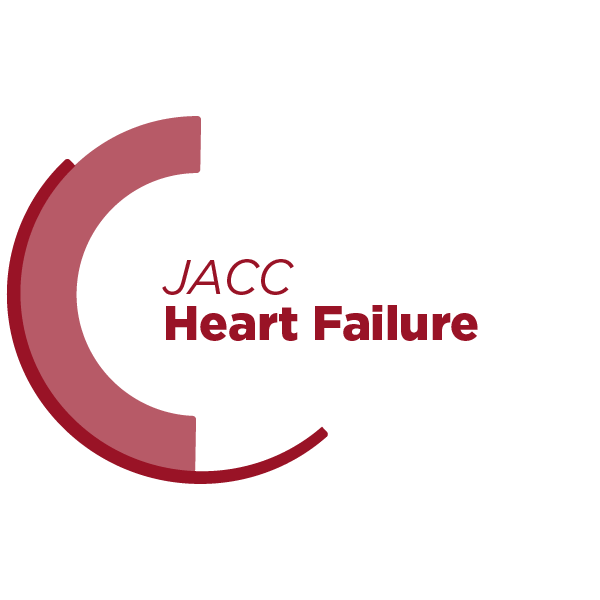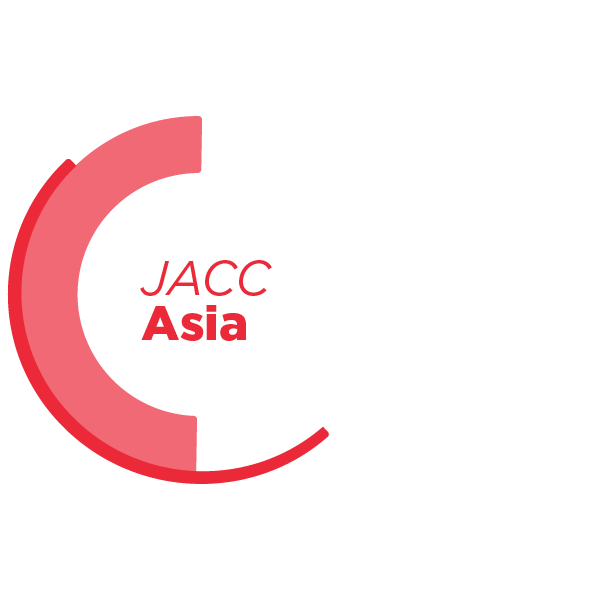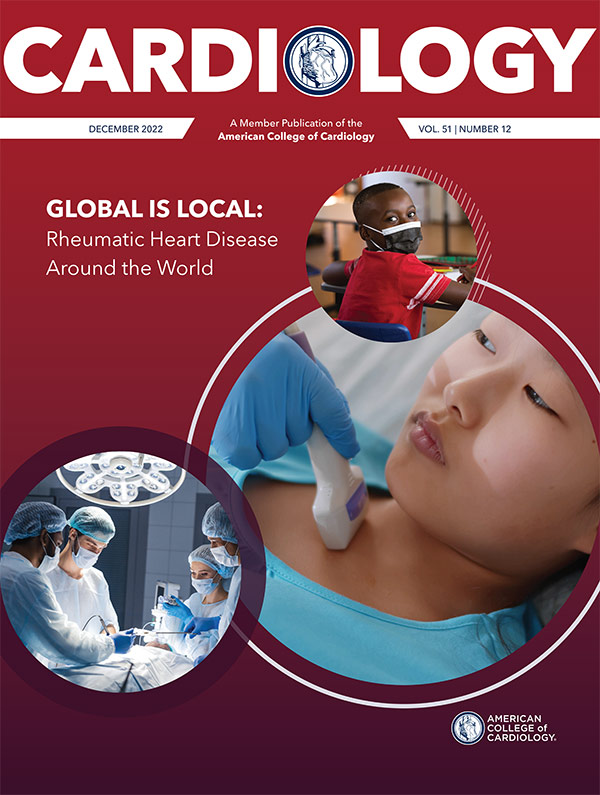JACC in a Flash | AHA 2022 Science Published Across JACC Journals
Dive Into the Hottest Trials From AHA 2022
Join guest moderator Clyde W. Yancy, MD, MACC, as he leads a discussion with expert panelists Ajay J. Kirtane, MD, FACC; Bonnie Ky, MD, MSCE, FACC; Marc Ruel, MD, MPH, FACC; and Usha B. Tedrow, MD, MSc, for a deep dive into the key takeaways and practice implications of SPORT, TRANSFORM HF, IRONMAN, ECMO-CS, CRISPR, ISCHEMIA EXTENDed, and more. Watch the full video or jump to individual trial discussions at JACC.org/CardiologyHour.
Click here to read the complete articles.
A range of science, including a late-breaking clinical trial, presented during AHA 2022 in Chicago was simultaneously published in JACC, JACC: Clinical Electrophysiology, JACC: Heart Failure, JACC: Cardiovascular Interventions, JACC: CardioOncology, JACC: Basic to Translational Science and JACC: Asia. Below are some of the highlights.

Edoxaban in Children With Cardiac Disease: A study by Michael A. Portman, MD, et al., identified edoxaban as a potential alternative mode of thromboprophylaxis in children with cardiac disease. Results of a cohort of 167 children in the ENNOBLE-ATE trial showed low rates of clinically relevant bleeding and thromboembolism with advantages of once daily dosing and infrequent monitoring requirement. In a related editorial comment, Nadine F. Choueiter, MD, writes that while the study provides "exciting and crucial initial evidence" on the subject, "it is neither designed nor powered to test the superiority or inferiority of edoxaban in comparison to anticoagulants."
Elevated C-Reactive Protein: Lipoprotein(a) [Lp(a)] concentration is associated with the risk of cardiovascular events, reflecting atherogenic, thrombogenic or proinflammatory properties, according to Gregory G. Schwartz, MD, PhD, FACC, et al. A post-hoc analysis of the ODYSSEY OUTCOMES trial concluded that elevated high-sensitivity C-reactive protein amplifies the relationship of Lp(a) with the risk of cardiovascular events after acute coronary syndrome (ACS). Additionally, the clinical benefit of alirocumab after ACS depends on levels of both biomarkers.
Thrombotic Antiphospholipid Syndrome: A meta-analysis conducted by Candrika D. Khairani, MD, et al., of four open-label randomized controlled trials involving 472 patients found that patients with thrombotic antiphospholipid syndrome randomized to direct oral anticoagulants (DOACs) vs. vitamin K antagonists (VKAs) appear to have increased risk for arterial thrombotic events. However, no significant differences were observed between patients randomized to DOACs vs. VKAs in the risk of subsequent venous thromboembolic events or major bleeding.
High-Sensitivity Cardiac Troponin Implementation: A study by Cian McCarthy, MBBCh, BAO, et al., examined trends in implementation of hs-cTn assays among 500 participating hospitals in ACC's Chest Pain-MI Registry and assessed the association of their use with in-hospital cardiac testing and outcomes. They found that implementation of hs-cTn is increasing but most U.S. hospitals continue to use less sensitive assays. Additionally, hs-cTn use was associated with modestly shorter length of stay, greater use of echocardiography for NSTE-ACS, and less use of invasive angiography among low-risk patients.
Pediatric CHD Research: A workshop convened by the National Heart, Lung, and Blood Institute in August 2021 identified opportunities in pediatric and congenital cardiovascular research that would improve outcomes in patients with congenital heart disease (CHD) across the lifespan. Alexander R. Opotowsky, MD, MMSc, et al., write that the identified themes "provide a framework to focus our efforts to enhance the impact of clinical research on pediatric and congenital cardiovascular disease," and that to achieve the field's shared potential it will be crucial to partner across a broad range of organizers and investigators to fund and perform research.

Metabolomic Signatures of MGU on Fluorine-18 FDG-PET: In a crossover trial (KEETO-CROSS), Mahesh K. Vidula, MD, FACC, et al., found that combined markers of enhanced ketone/fatty acid oxidation and BCAA catabolism strongly predicted myocardial glucose suppression (MGS), had robust discriminatory value, and demonstrated utility in measuring before fluorodeoxyglucose positron emission tomography (FDG-PET) to reduce the risk of false-positive scans. "These findings suggest that strategies to enhance these oxidative pathways, rather than augmenting circulating metabolite levels alone, may be more effective in improving MGS," Vidula, et al., write.

Income and HF Readmission Trends: A study by Nijat Aliyev, MD, et al., examined data of 9,020,742 HF index hospitalizations from the National Readmission Database and compared patient outcomes based on household income quartiles. They found that, between 2010 and 2019, adjusted all-cause and HF-specific 30-day readmission rates increased for patients in the lowest two income quartiles. "The current data suggest that disparities in readmissions by household income status have increased over time," Aliyev, et al., write.
HF Cardiogenic Shock: In a large, contemporary HF cardiogenic shock cohort, Jaime Hernandez-Montfort, MD, MPH, et al., found a greater incidence of in-hospital death, cardiac arrest, and more rapid escalation to maximum SCAI Stage severity among de novo HF-related cardiogenic shock. In addition, the use of acute mechanical circulatory support in HF-related cardiogenic shock was common with significant heterogeneity among device type.

Cardiogenic Shock With Temporary MCS: Using data from a nationwide Japanese database of 65,847 patients receiving temporary mechanical circulatory support (MCS) for cardiogenic shock, Toru Kondo, MD, PhD, et al., determined the most common causes of cardiogenic shock were acute myocardial infarction (77.4%) and HF (13.6%). The use and combination patterns of MCS varied according to the causes of cardiogenic shock, and the in-hospital mortality also varied according to the types of MCS used within each specific cause of cardiogenic shock.

Periodontitis and Atrial Fibrosis: New research from Shunsuke Miyauchi, MD, PhD, et al., identified periodontitis as a likely risk factor for atrial fibrillation (AFib). The researchers, who evaluated the relationship between periodontitis and atrial fibrosis by studying resected left atrial appendages (LAA), conducted an oral examination in 76 patients who were scheduled to undergo LAA excision during cardiac surgery. In a related editorial comment, Andreas Goette, MD, asks, "What are the driving factors for the activation of atrial inflammatory pathways or histological atrial changes? Are profibrotic risk factors modifiable?"
Low BMI and Cardiac Tamponade During AFib Ablation: A study by Reina Tonegawa-Kuji, MD, PhD, et al., found low body mass index was independently associated with an increased risk of cardiac tamponade during AFib ablation. The researchers analyzed data from a Japanese nationwide claims database of 59,789 hospitalizations with catheter ablation for AFib between April 1, 2016 and March 31, 2018.
Subcutaneous and Transvenous ICD in ARVC: A study by Weijia Wang, MD, MPH, et al., compared clinical and quality-of-life outcomes between transvenous and subcutaneous ICDs among patients with arrhythmogenic right ventricular cardiomyopathy (ARVC) and concluded that in patients with ARVC receiving an ICD, the risk of inappropriate shocks from a subcutaneous ICD should be balanced against the significant vascular complication risk from a transvenous ICD.
Early Mortality After VT Ablation in Reduced LVEF: A retrospective analysis of 503 patients with reduced left ventricular ejection fraction (LVEF) after ventricular tachycardia (VT) ablation showed that the overall early mortality (≤30 days) rate was 5%. The most common primary cause of death was recurrent VT (44%), followed by decompensated heart failure (HF) (28%), according to Justin Z. Lee, MD, et al. Significant predictors of early mortality included nonischemic cardiomyopathy, lower LVEF, electrical storm and ventricular fibrillation.

Cangrelor Following Ticagrelor Pretreatment: In a prospective, randomized, double-blind, placebo-controlled, cross-over, pharmacokinetic and pharmacodynamic study of patients with coronary artery disease, Francesco Franchi, MD, et al., concluded that the use of cangrelor in patients pretreated with ticagrelor results in enhanced platelet inhibition with no differences in pharmacokinetic/pharmacodynamic profiles after discontinuation of drug infusion, indicating the absence of a drug-drug interaction.

No Racial Difference Seen in Post ADT Increase in Allostatic Load in Men With Prostate Cancer
Chronic stress, as measured by the allostatic load, is higher among non-Hispanic Blacks compared with non-Hispanic Whites before a diagnosis of prostate cancer, but both groups experienced a similar increase after diagnosis and treatment with androgen deprivation therapy (ADT), according to a single-center study being presented during AHA 2022 and published in JACC: CardioOncology.
Allostatic load, a score calculated using biomarkers, is associated with as much as a 130% increase in the risk of cardiovascular disease with a 1-unit increase over a nearly 10-year period. ADT is associated with an increase in the risk of cardiovascular disease and this risk is known to be significantly higher in non-Hispanic Blacks.
Nickolas Stabellini, BS, et al., used generalized multivariable mixed-effects models to examine whether ADT could lead to a greater increase in cardiovascular disease among non-Hispanic Black men than non-Hispanic White men ≥18 years of age who were diagnosed with prostate cancer between 2004-2022 at the University Hospitals Seidman Cancer Center.
Allostatic load (an ordinal measure from 0 to 11) was calculated before cancer diagnosis and then monthly for the first year. One point was assigned for these cutoffs: systolic blood pressure ≥140 mm Hg, diastolic blood pressure ≥90 mm Hg, heart rate >100 beats/min, total cholesterol ≥240 mg/dL, HDL-C ≤50 mg/dL, triglycerides ≥150 mg/dL, glycosylated hemoglobin ≥6.5%, body mass index ≥30kg/m2, glucose ≥110 mg/dL, C-reactive protein >3 mg/L, and interleukin-6 >1.8 pg/mL.
Of the 7,168 participants (mean age, 68 years), 1,570 were non-Hispanic Black. Most had a Charlson score from 1 to 2 (59.3%), 14.4% had at least one cardiovascular disease factor, and 12.7% had a Gleason score ≥8. As for treatment, 25.8% had surgery, 31.9% received radiotherapy, and 20.9% received ADT.
Results showed no significant racial difference in the increase in allostatic load among those receiving ADT (0.08 ± 0.05; p=0.080). The median allostatic load before cancer diagnosis for the entire population was 2 (IQR, 0-4) and it rose to 3 (IQR, 1-4) after the first year of diagnosis. Compared with patients not taking ADT, the average estimated monthly variation in allostatic load was 0.10 ± 0.04 higher among non-Hispanic Blacks on ADT (p=0.025) and 0.16 ± 0.02 higher among non-Hispanic Whites on ADT (p<0.001).
The authors note that although no significant difference was seen by self-identified race, the "precancer [allostatic load]/level of chronic stress and non-ADT-related increase in [allostatic load] may explain racial differences in ADT-related [cardiovascular disease]."
Clinical Topics: Acute Coronary Syndromes, Anticoagulation Management, Congenital Heart Disease and Pediatric Cardiology, Diabetes and Cardiometabolic Disease, Dyslipidemia, Heart Failure and Cardiomyopathies, Valvular Heart Disease, Vascular Medicine, Anticoagulation Management and ACS, Congenital Heart Disease, Acute Heart Failure
Keywords: ACC Publications, Cardiology Magazine, AHA Annual Scientific Sessions, AHA22, Anticoagulants, Heart Defects, Congenital, Heart Failure, Dyslipidemias, Acute Coronary Syndrome, Social Determinants of Health, Aneurysm, Heart Valve Diseases, ACC International
< Back to Listings

